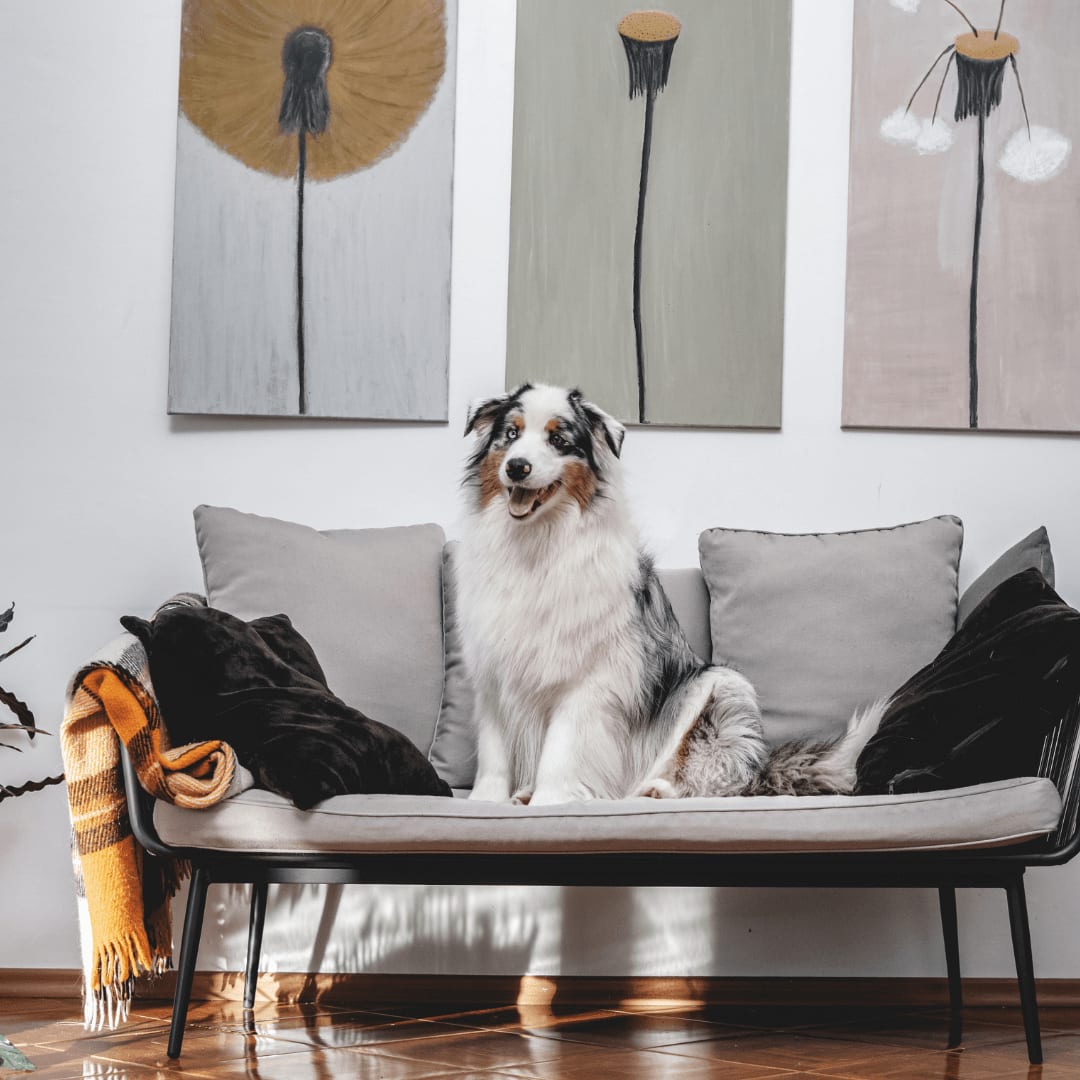Wait! Your Pet Has a Home Wish List Too!
While searching for a new home, a responsible and loving pet owner should consider their pets' needs as well as their own. To avoid a heartbreaking situation for you and your pet, here are some things to consider:
Review All Pet Rules, Restrictions, and Laws
HOAS, condominium rules/regulations, and city and state regulations may all influence your ability to have or keep a pet. They may also restrict the type of pet on the property. Some HOAS or condominium rules/restrictions have breed-specific restrictions, noise restrictions (excessive barking), and or additional fees for having pets on the property. Find out if pets are allowed in condo common areas. Is there a weight restriction or number restriction for pets or type of pet? Do not assume it will be "OK" because you saw someone walking their dog during the showing, or that the condo association won't find out. Violating the rules of HOAS or condominium rules/laws can result in fees and may require you to relinquish your pet to be compliant. It is critical that you fully understand All rules, restrictions, and laws regarding pets for the property of interest. Ask for a complete copy of all restrictions and regulations for every property, and carefully review them prior to submitting any offers.
Fencing
A fence is a great way to keep your pet safe while they play. However, many HOAS or condominium homes do not allow fencing of any kind. Some allow only electric, buried fences. Without a fence, electronic or traditional, you are taking the risk of having your pet run away or being injured.
The Neighborhood and Surroundings
Are there areas to safely walk your pet (sidewalks/trails) and to have them "do their business" without having to walk in the street? Is the home located on a busy street? Are there parks or dog parks nearby for your pet to enjoy? Are there veterinarians, dog groomers, and pet sitters in close proximity?
Is it close to a green space? A green space is nice, but it may also be home to coyotes, foxes, or even large birds of prey, which could be dangerous for smaller dogs, cats, or pet rabbits.
Water Features
Does your home have a water feature or pool, or is it adjacent to a body of water? These could prove to be a drowning risk for your pets as well. Make sure pools have appropriate steps or a
Skamper Ramp for pets, and wildlife for that matter, to safely get themselves out of the pool should they accidentally fall in. Again, fencing is a good preventative measure to prevent accidents as well.
Pet- Scaping
We often think of things inside the home, but forget the outside. Some mulches, weed control sprays, and plantings (some bulbs, lilies, ivy, ferns, etc.) are toxic/poisonous and should be taken seriously. If you live in a rural area, there may be toxic fungi, plants, and berries that grow wild as well. Survey the area your pet will frequent and make sure there are no toxic temptations for your curious pet to sample. Your veterinarian may have a
list of toxic plants to help you identify potential problems.
Flooring
Are the floors hardy enough to withstand scratches from dog or cat claws, or the occasional pet accident? Some great options are poured concrete, tile, luxury vinyl, or laminate floors. They are more scratch-resistant and make it easier to clean up the inevitable shedding. If the home has wall-to-wall carpet, you may wish to replace it with an easier-to-clean option.
This being said, slippery floors aren't always pet-friendly, however. Older pets may find it more difficult to walk across slick surfaces like laminate, tile, or concrete. Putting down some washable, slip-resistant rugs can help.
Stairs
Are stairs carpeted and easy for pets to go up and down? If not, consider installing a carpeted runner to make the stairs safer for pets to navigate. As pets age, the steps may become impossible. What if they can't climb the stairs to be with you at night? Would a home with fewer or no stairs be a better solution for you and your pet? Make sure to think ahead about what you will need to do to make the entire life of your pet more comfortable.
Square Footage
Simply put, do you have the space necessary for your pet? After a month of tripping over or running into our beloved Great Dane, that new home may start to feel cramped. Is there room for a dog bed or cat tree in the bedroom or living area? Does your pet have room to roam, run, and exercise?
Prevent "High-Rise Syndrome" with Cats
They say cats always land on their feet. Unfortunately, this isn't always true. To keep your cat safe and to prevent your cat from falling through windows on upper floors, make sure to install screens and make sure they are new, sturdy, and undamaged. In addition, make sure screens are in place and snuggly installed in the windows. Check them periodically as well for damage.
Pet Bathing
A large tub or a walk-in shower with a shower head extension is usually sufficient for bathing pets. However, finding a home with a bathing station in the garage or mud room would be ideal. Nobody relishes the idea of their fur baby unleashing a mud-laden hurricane as you chase them to the bathroom for their bath!
Choose the Right REALTOR®
We know what it is like to have pets and have the knowledge and experience to help you find the right home for your pets' well-being as well as yours. Let us know the type and number of pets you have along with any other considerations, so we can help you make the best decisions.
Taking the time to consider your pets' well-being will go a long way in creating not only a happy home for you, but for your furry family members as well.







